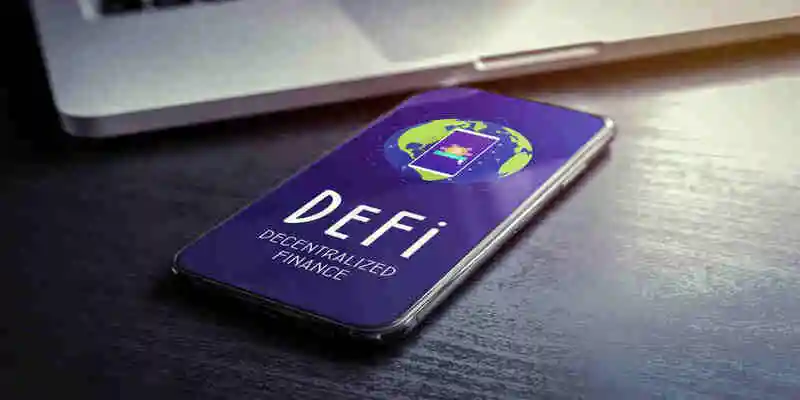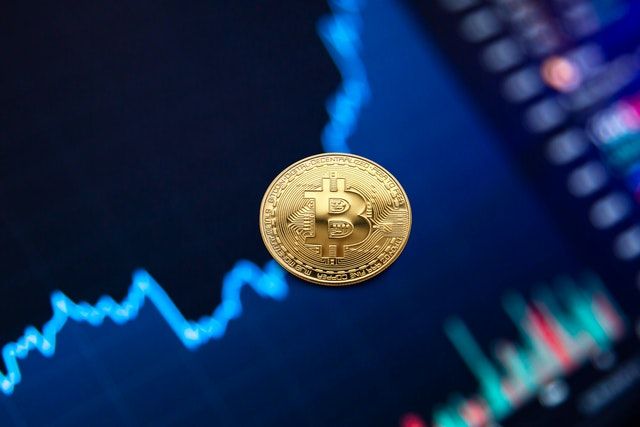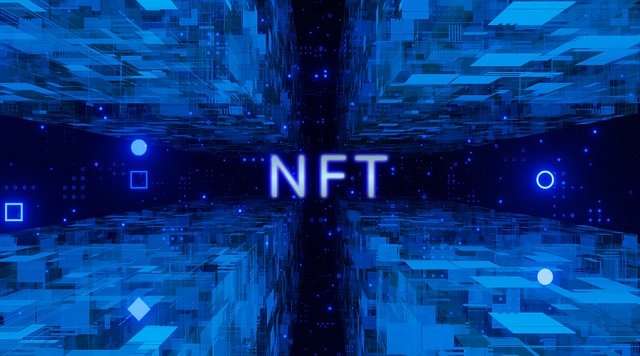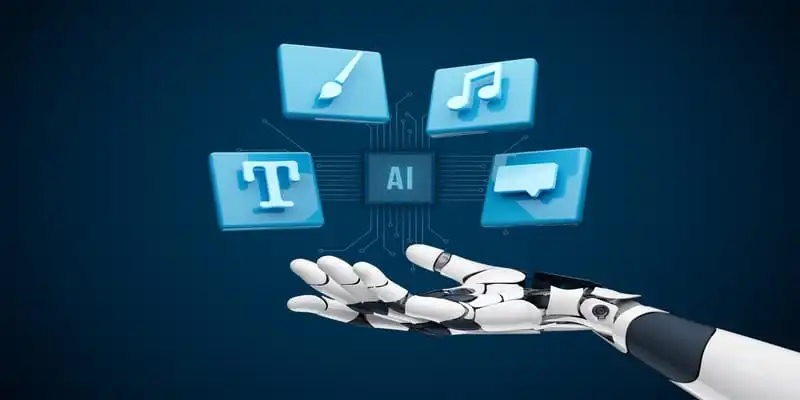What is Defi Llama? Complete Guide to Defi Analytics Dashboard for Professional Use
The DeFi movement refers to a type of financial product that prioritizes decentralization and employs profitable incentive systems to entice investors to participate. Defi Llama provides accurate statistics free of advertisements, sponsored material, and transparency via its analytics dashboard.

Decentralized finance, or DeFi, is at the epicentre of the recent cryptocurrency bull run.
DeFi is the current thing in crypto, similar to how Initial Coin Offerings (ICOs) were all the rage in 2017. According to analytics site DeFi Pulse, just $1 billion was locked up in DeFi protocols in June 2020. By January 2020, "DeFi degens" had invested more than $20 billion in DeFi intelligent contracts.
What Exactly is DeFi?
So, what exactly is this ferocious, savage beast known as DeFi? Isn't crypto finance, in general, decentralized? The DeFi movement refers to a type of financial product prioritizes decentralization and employs profitable incentive systems to entice investors to participate.
DeFi is an anonymous system that allows standard financial transactions to be completed without intervention from an intermediary or regulating agency. Instead of relying on a neutral third party, DeFi connects consumers directly using a blockchain-based application known as the DeFi protocol; its products and smart contracts ensure that these agreements are met. While DeFi apps may be built on different blockchains, Ethereum is the most popular and accessible in 2021.
DeFi's popularity skyrocketed between 2020 and 2021. According to Defi Pulse, the total value locked of assets tied to DeFi contracts climbed from around $697 million at the start of 2020 to more than $85 billion in August 2021.
Now that we've learned what DeFi is let's look at some of its famous uses.
1. Decentralized transactions (DEXs)
Decentralized exchanges are those that function without the need of a middleman. They are not as well-known as their more centralized equivalents.
DEXs let users interact directly with one another in a trustless environment to buy and trade bitcoins. DEX assets are never stored in an escrow or third-party wallet, as is the case with centralized exchanges. Uniswap, Curve, and SushiSwap are some of the best DEXs.
On the other hand, centralized exchanges are trading platforms controlled by a single entity. Famous instances of centralized exchanges are Binance and Coinbase. They have a custodial character. In other words, buyers and sellers rely on the central authority to safeguard their digital assets.
2. Lending Platforms
Decentralized lending platforms, according to proponents, are democratizing the loan ecosystem. Smart contracts are used in place of intermediaries such as banks on these platforms, allowing borrowers and lenders to engage in an open system. By lending their crypto assets, lenders may earn interest.
In the traditional banking system, you must provide collateral before you may obtain bank loans. It is comparable to what occurs in DeFi. Borrowers must over-collateralize their loans by giving assets worth more incredible than the loan amount. Maker, Compound, and Aave are three of the most popular DeFi lending platforms.
3. Forecasting Markets
Participants in a prediction market can bet on the outcomes of future occurrences. These platforms operate the same way as traditional prediction markets but with blockchain capability that removes intermediaries. Augur, Gnosis, and FTX are examples of DeFi prediction markets. During the 2020 U.S. presidential elections, cryptocurrency-powered prediction markets thrived. Augur reached a significant volume of more than $8 million. Other sites, like Polymarket and Prediction, also had large election businesses. All a user requires is a smartphone or a PC with internet connectivity.
Globally, there are a substantial number of unbanked persons. In 2018, the World Bank projected that 20% of the world's population lacked access to financial services. One reason is that most unbanked people lack essential know-your-customer (KYC) papers such as state-issued identification cards.
Several DeFi platforms enable users to operate without any of these. A Maker loan, for example, may be obtained without the need for identity or a credit score.
4. Financial self-sufficiency
You keep control of your funds using DeFi platforms. While you must deposit cash into the platform, you control what happens to them. A smart contract does not rely on human intermediaries to qualify you for a loan or decide how to manage your finances. Nobody has the authority to prohibit you from the DeFi protocol. The underlying smart contract is the law and acts without regard for context.
5. Increased transparency
DeFi allows for increased openness and accessibility. Because most DeFi protocols are constructed on the blockchain, a public ledger, all actions are open to the public. Anyone may observe transactions, but unlike typical banks, these accounts are not directly linked to anyone. Accounts are instead pseudo-anonymous, with just numerical addresses provided. Most DeFi products are open source, anybody with programming expertise can audit or expand on the source code. Community participation makes open-source programs more secure and of more excellent quality than proprietary software.
What Exactly is DeFi Llama?
DeFi Llama monitors all familiar chains and their applications (DApps). The data team examines trading activities across the world's most important networks. The platform collects data and makes it available to the public for free, including cumulative data for all chains combined. At the time of writing, the total value locked in for all DeFi activities was $200 billion.
Defi Llama asserts that it is devoted to providing accurate statistics free of advertisements and sponsored material and transparency. It is a list of DeFi projects from all chains. Contributing and maintaining DefiLlama's adapters is the responsibility of the relevant communities, with all modifications coordinated through the DefiLlama/DefiLlama-Adapters Github repository.
Making a few blockchain calls or calling specific endpoints to collect data on a protocol, this function computes the TVL of a protocol. Because the SDK presently only supports EVM chains, you should create an SDK adapter if your project is on one of these chains; otherwise, a fetch adapter is the best solution.
You may use its adaptor to retrieve token balances from your protocol's intelligent contracts at a specific moment depending on a timestamp and block height (on Ethereum).
Mid-Size businesses, small businesses, enterprises, Freelance, Nonprofit, and Government are the intended users and organizations for Defi Llama. The platform also invites new clients to its website.
With the current crypto market decline, the decentralized finance (DeFi) industry has taken a major hit. The space that had been the breakout star of 2021 has rapidly begun to lose all the value gained during the bull market. It was caused by massive events that triggered the different crashes. The DeFi TVL has fallen so far in the last month that it is currently trading below $100 billion for the first time in more than a year.

DeFi TVL Falls to a 15-Month Low
The Total Value Locked (TVL) in the decentralized finance (DeFi) market peaked at more than $250 billion last year. Despite the dips and crashes that rocked months after, it has retained most of its value. However, the 2022 low momentum trend has also spilt into the DeFi area, causing it to lose the vast bulk of its TVL.
DeFi Llama is a DeFi (decentralized finance) analytics dashboard that monitors blockchains including Ethereum (ETH), Terra (LUNA), Avalanche (AVAX), Fantom (FTM), Cardano (ADA), and others. Because DeFi apps are not centralized, it is not easy to maintain track of all activities across the board. It is where DeFi Llama's professional dashboard comes in.
How Does DeFi Llama Work?
The website of DeFi Llama collects data from over 80 Layer 1 blockchains and hundreds of decentralized apps. It helps us to identify which chains are the most important and how DeFi is expanding. The aggregated statistics on the website are free to use, and a public API may be used to incorporate this data on other websites.
DeFi Llama's data is trustworthy because it is based on open standards. Data on blockchains are open to the public. Users may use their oracles or Ethereum's block explorers to follow every transaction on decentralized apps like UniSwap (UNI). According to DeFi Llama's data, large-scale DeFi trade began in 2020 and has flourished since then.
Dashboard for DeFi Llama
When consumers access the website, they first see the DeFi Llama dashboard. This dashboard allows you to see TVL for all DeFi activities. TVL indicates that a specific quantity of money has been put on such networks in the form of liquidity tokens (LPs) or collateral.
The site shows TVL rankings for dApps based on the cash value associated with each application. All trading on decentralized exchanges, yield generation protocols, insurance protocols, and other DeFi applications are included in this data.
According to the dashboard's statistics, instruments like Curve Finance (CRV) have the greatest TVL, with over $18 billion in assets locked up on Curve alone. Lending protocols like AAVE (AAVE) are also increasing, with a market cap of $11 billion, indicating that decentralized financial services are becoming more popular.
Users can sort the TVL ranks by selecting Ethereum, Terra, Fantom, or another chain. If we select Ethereum, we will be provided with TVL-based apps designed for Ethereum.
DeFi Llama specifies whether the program is compatible with other chains besides Ethereum under "Chains." Curve Finance, for example, is also interoperable with seven other chains. It enables traders to locate the most acceptable DeFi exchanges for the larger chains without conducting individual research, saving them a significant amount of time.
Defi Llama Chains (Layer 1s)
DeFi Llama monitors the major DeFi blockchains based on TVL. It only lists Layer 1 chains on which applications may be built. The chains have an advantage over Bitcoin because they are compatible with smart contracts.
Smart contracts enable them to develop tokens like ERC-20 on top of these networks and DeFi apps such as AAVE that provide trustless lending services. Ethereum is the most popular DeFi chain, accounting for 54% of the market. According to the entire TVL of DeFi combined, Ethereum alone has approximately $110 billion locked up in its ecosystem.
It is a drop for Ethereum in percentage terms because it used to comprise 95-97 percent of all DeFi activity until early 2021 when rising rivals acquired market share. DeFi began with smart contracts and ERC-20 tokens on Ethereum. At the same time, apps like UniSwap and OpenSea paved the path for decentralized trading and NFTs.
However, when the price of Ethereum soared, and gas expenses increased in the first quarter of 2021, consumers began to abandon it. Ethereum users used to pay a few dollars in gas costs to transfer currencies, but this quickly rose to $100+ every deal. Due to the exorbitant costs, consumers migrated to rival chains such as Terra, BSC, and Avalanche: Terra is the second largest DeFi chain, with $23 billion TVL in revenue.
According to the trends, Ethereum will continue to be the leading DeFi chain. In Ethereum 2.0, Ethereum intends to forsake the present PoW (Proof-of-Work) protocol in favor of PoS (Proof-of-Stake). As a result, Ethereum is expected to maintain its dominant market share in the future years.

It should be noted that TVL is not the same as market capitalization. Although Bitcoin has twice the market capitalization of Ethereum, it does not allow smart contracts. It implies that DeFi apps cannot be developed and are not listed on DeFi Llama.
Oracles of DeFi Llama
Blockchain oracles are an essential part of the DeFi ecosystem. Because blockchain security causes chains to be isolated on their own, the chains require mechanisms to connect with the outside world. Oracle services enable intelligent contracts to link servers and data sources to blockchains.
Oracles can be used to deliver pricing feeds, weather data, payment service data, and other information. Developers may create automated systems that collect data from the real world and generate apps like conventional banking without the need for intermediaries (TradFi).
Chainlink (LINK) is the leading oracle service, with a 50% market share. Using its decentralized oracles, Chainlink alone secures more than $75 billion in DeFi. AAVE uses Chainlink oracles to get crypto pricing data, enabling quick decentralized lending/borrowing services.
Maker (MKR), Internal, and Twap also have a considerable market share in the Oracle industry.
DeFi Llama Forks
Forks are modified copies of the original software that have been re-used. DeFi apps are often open-source, with the code accessible for commercial usage, making it simple to replicate existing services. Forks may have greater combined TVL than the original application in some situations.
According to DeFi Llama, UniSwap is the most forked software in the DeFi sector, accounting for more than 57 percent of the market. UniSwap pioneered DeFi trading by enabling users to exchange ERC-20 tokens for Ethereum.
UniSwap's code was forked by various decentralized exchanges, including PancakeSwap (CAKE), SushiSwap (SUSHI), Curve Finance (CRV), SpookySwap (BOO), and many more.
Airdrops from DeFi Llama
Airdrops are token giveaways frequently distributed upon the debut of a new cryptocurrency. Because it compensates early users and promotes the currency, airdropping free tokens is reasonably frequent in the DeFi community.
When UniSwap originally released its UNI coin, they airdropped the current value of $10,000 to all qualifying users. Services like the Ethereum Name Service (ENS) issued their coin and distributed over $10,000 worth to registered individuals.eth domain names.
The majority of DeFi applications have their tokens. Those that haven't yet launched their token are expected to do so in the future. Consumers can qualify for these airdrops by utilizing the services.
DeFi Llama NFTs
NFTs play an essential role in the DeFi ecosystem. Unlike millions who may own cryptocurrencies, one individual can only own NFTs. NFTs are frequently offered as collections, such as the CryptoPunk series, which contains 10,000 NFTs.
NFTs have a total annual transaction volume of $20 billion. The daily amount varies dramatically. On some days, trading volume can approach $50 million, while on others, it can fall below $5 million.
NFTs are frequently produced for free (excluding gas expenses) and gain value as they trade on markets such as OpenSea or Rarible. Each collection has a "floor" pricing that varies according to the value of that collection. Many top NFT collections have starting values of 50 ETH or over $150,000 USD. Because NFTs are not fungible tokens like ERC-20s, DeFi Llama has created a new dashboard area for them.

The Industry's Future
DeFi's success in 2020 has drawn the attention of the whole crypto industry. With the value of assets locked growing, even some traditional crypto corporations are seeking to capitalize on the buzz.
DeFi Llama estimates that the entire wealth locked in DeFi currently surpasses US$165 billion. It is a 770 percent growth since January of this year and a more than 19,000 percent increase since the beginning of 2020.
Unfortunately, the rise of DeFi has attracted a slew of unscrupulous individuals. According to recent statistics from crypto analytics firm CipherTrace, cumulative losses from DeFi thefts in 2020 totaled $100 million. And it's getting better. DeFi methods accounted for 50% of all bitcoin thefts in the second half of 2020 alone. The controlled exchange KuCoin had around $19 million liquidated by thieves through decentralized exchanges.
CipherTrace thinks that DeFi's rise made it an ideal target for hackers, most of whom were aware of and exploited some of its technological weaknesses.
The DeFi sector is experiencing the same growing pains as the crypto industry. It is still in its infancy, with lots of development opportunities. However, despite the perks and profits, it remains a dangerous venture for investors.
Conclusion
DeFi Llama is and continues to be one of the finest aggregators for assessing Total-Value Locked (TVL) within each DeFi Protocol. DeFi Llama is one of the most important and reliable tools on the web for implementing each DeFi protocol. Using their tools, you can learn which protocols and blockchains are gaining popularity and how they rank.
DeFi is a $200 billion highly fragmented business. While Ethereum controlled nearly the whole market, other chains formed and established their ecosystems, making it difficult to track their prices. DeFi Llama fills that need by gathering the data and creating new tools to track it in real-time.
Traders wishing to begin their DeFi journey may use these tools to research popular chains and test the DeFi applications designed for them. Developers may utilize their API to include crucial information on their website and demonstrate the DeFi landscape's progress.



